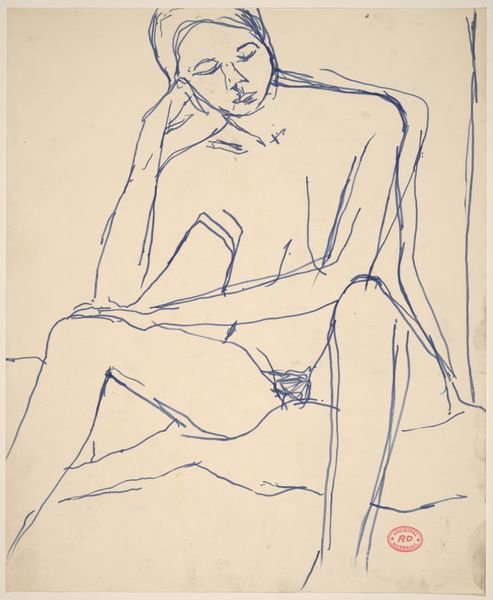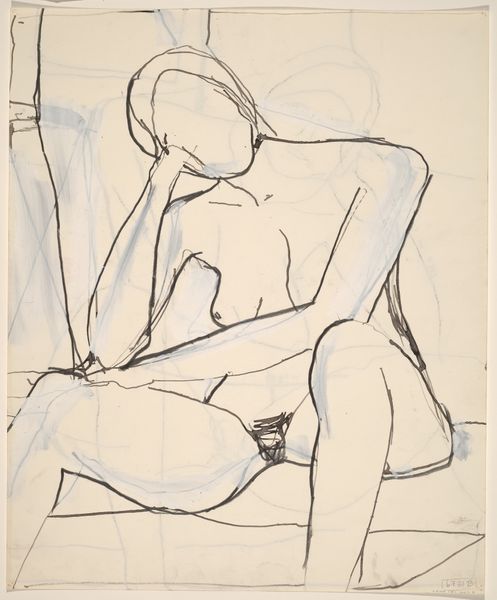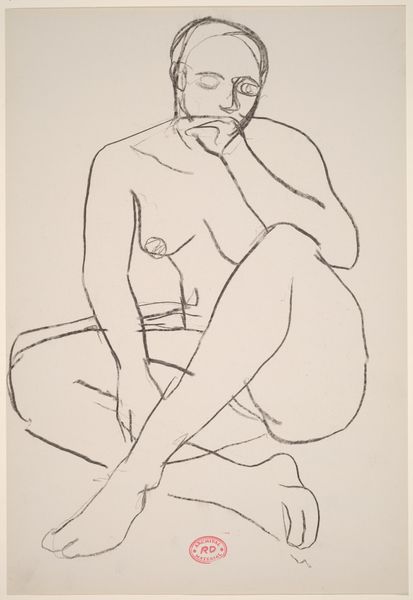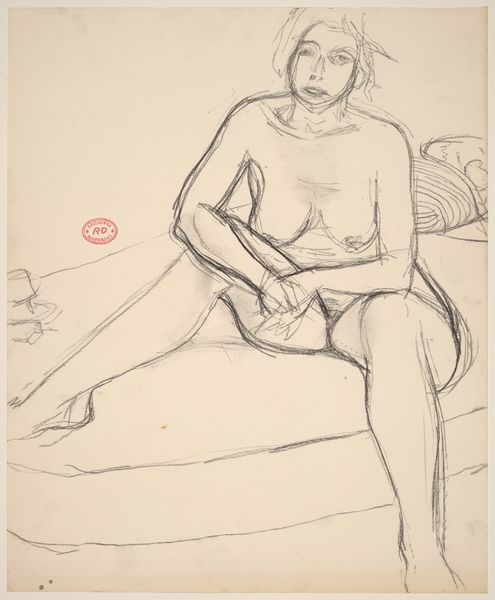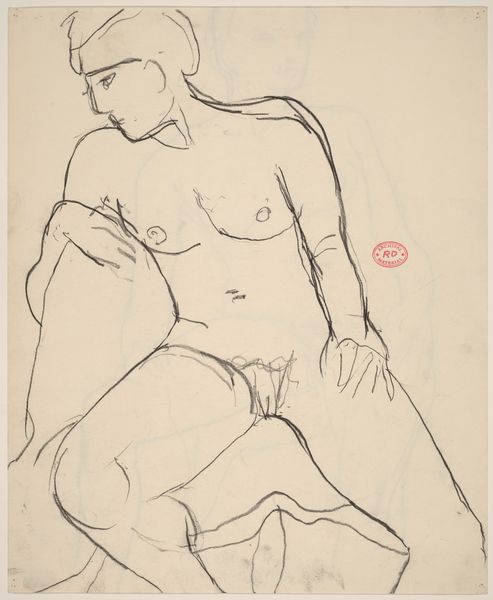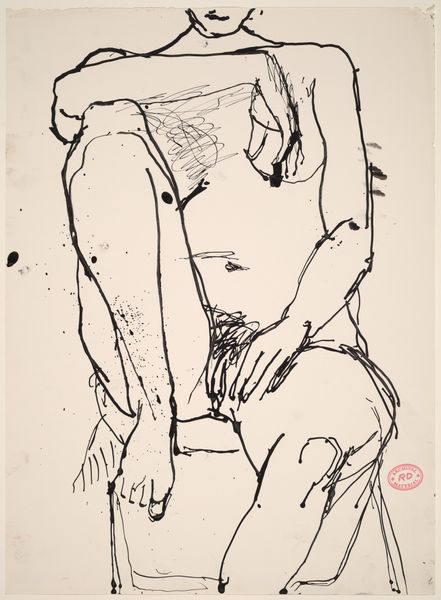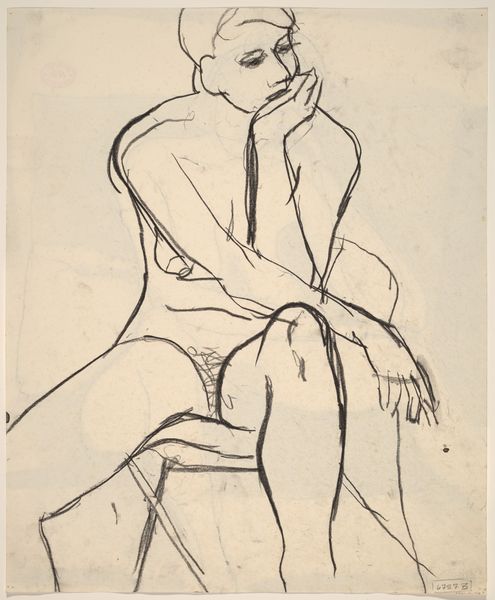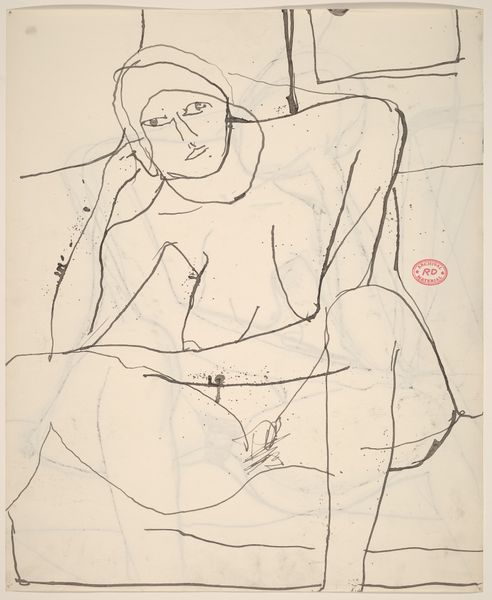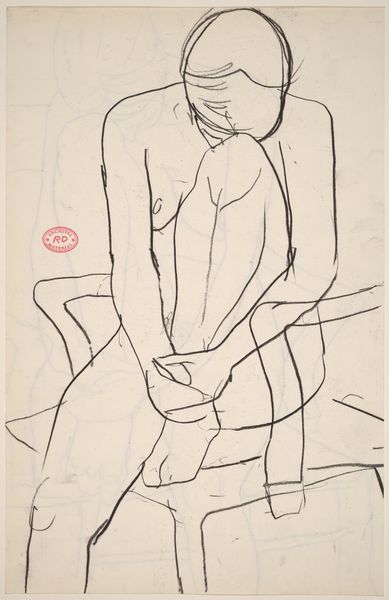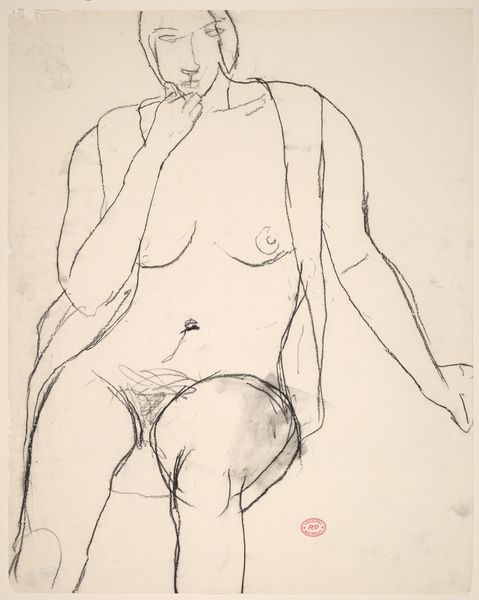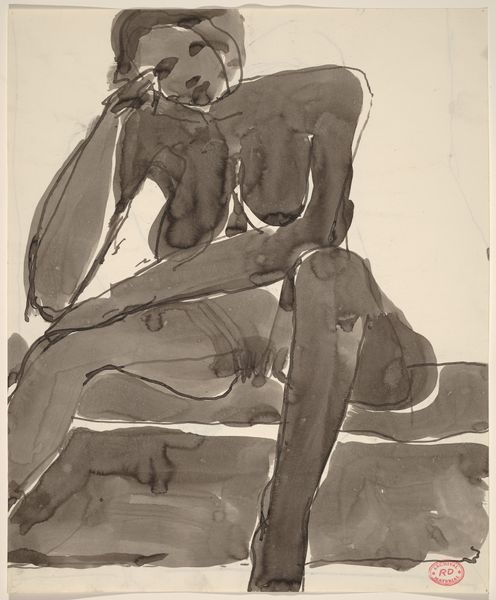![Untitled [seated nude resting her head on her right hand] [verso] by Richard Diebenkorn](/_next/image?url=https%3A%2F%2Fd2w8kbdekdi1gv.cloudfront.net%2FeyJidWNrZXQiOiAiYXJ0ZXJhLWltYWdlcy1idWNrZXQiLCAia2V5IjogImFydHdvcmtzLzI4MzgyNzdjLTYyZDctNDhiZC05ZDM4LTYyMmJmMzdhZmI3Mi8yODM4Mjc3Yy02MmQ3LTQ4YmQtOWQzOC02MjJiZjM3YWZiNzJfZnVsbC5qcGciLCAiZWRpdHMiOiB7InJlc2l6ZSI6IHsid2lkdGgiOiAxOTIwLCAiaGVpZ2h0IjogMTkyMCwgImZpdCI6ICJpbnNpZGUifX19&w=3840&q=75)
Untitled [seated nude resting her head on her right hand] [verso] 1955 - 1967
0:00
0:00
drawing, ink, pen
#
portrait
#
drawing
#
ink drawing
#
pen sketch
#
figuration
#
bay-area-figurative-movement
#
ink
#
line
#
pen
#
portrait drawing
#
nude
Dimensions: overall: 43.2 x 35.6 cm (17 x 14 in.)
Copyright: National Gallery of Art: CC0 1.0
Editor: So, here we have Richard Diebenkorn's "Untitled [seated nude resting her head on her right hand] [verso]," created between 1955 and 1967 using pen and ink. The lines are so minimal, almost tentative. What's your take on it? Curator: It's fascinating how Diebenkorn captures the essence of the figure with such sparse lines. Think about the social context; Abstract Expressionism was still a major force, yet here’s Diebenkorn engaging with figuration, but in a way that clearly acknowledges the lessons of abstraction. What statement might he be making about art institutions and their influence? Editor: That's interesting, because to me it feels so personal, almost like a quick sketch in a private sketchbook. I didn't think of it in opposition to the wider art world at the time. Curator: And isn’t that the power of art? It operates on multiple levels. This drawing, seemingly so intimate, was created during a period when artists were grappling with the legacy of World War II and the rise of American power. The question arises, who gets to portray the nude, and whose gaze does it represent? Editor: So you see even a seemingly simple sketch of a nude figure as a reflection of these power dynamics? Curator: Absolutely. The choices the artist makes—the pose, the level of detail, even the medium—all speak to the prevailing attitudes of the time and, perhaps, a challenge to those attitudes. It is an example of the ongoing power of imagery within cultural movements. Editor: That gives me a lot to think about. It’s incredible how much context is embedded in what looks like just a simple line drawing. Curator: Exactly! The drawing shows how deeply the artist must have felt the societal pressures of the time and sought to depict it. Editor: This has definitely broadened my perspective on how to view and understand art.
Comments
No comments
Be the first to comment and join the conversation on the ultimate creative platform.
